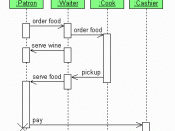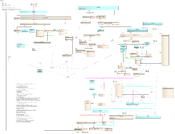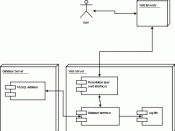In todayÃÂs business environment there needs to be a convergence between structured data (as stored in the relational database) and unstructured data (such as might be found in textual information or the World Wide Web). What are the trends towards marrying these two very different kinds of information together?Meta data is going "mainstream" as application areas, and the pressure for interoperability, are increasing steadily. Likewise, the tools and technologies for defining, storing and managing meta data are becoming more robust. And not just about familiar tabular data structures. More and more, you're likely to need meta data definitions for unstructured documents, web pages, spatial data, and even digital images and video.
I am not too familiar with this process, but these are some of the trends I found in my research, one in particular is Metadata and Metadata Repository:Modeling has been an essential part of engineering, art and construction for centuries.
Complex software and database designs that would be difficult for you to describe textually can readily be conveyed through design diagrams. Each diagram focuses on one aspect of your application. Modeling provides three key benefits: visualization, complexity management and clear communication. UML stands for Unified Modeling Language and is the standard language for visualizing, specifying, constructing, and documenting the artifacts of a software-intensive system.
"metadata repository", in terms of the specific things expected to be kept track of in such a repository. It will include analysis objects, such as entities and attributes, design objects, such as tables and columns, and, if time permits, a section on business rules.
XML-based applications easily and effectively include Corporate Portals, Enterprise Application Integration, Business-to-Business Communication, e-Commerce, and a myriad of other applications. XML (extensible Markup Language) is becoming the new standard language for building Corporate Portals, integrating legacy databases, and facilitating...


